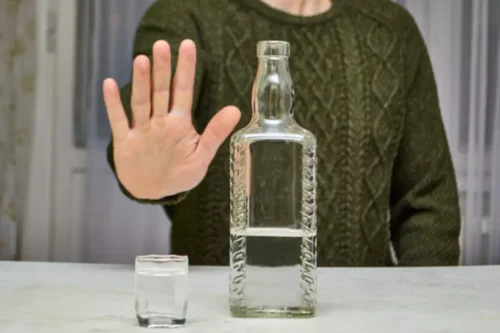
Because there is not much research on the optimal therapy for an IVDU with DVT, current recommendations are based on local standards. Patients using LMWHs also need less regular blood monitoring than patients taking warfarin; in Sheffield, the local strategy has been to check a complete blood count once a week to screen for LMWH problems. However, the length of therapy may affect a clinician’s prescription, and it is in this case, a balance between risk and benefit must be maintained. To minimize the risk of problems such as bleeding, an IVDU therapy may be shorter than that of a non-IVDU; nevertheless, shorter treatment regimens increase recurrence and morbidity [14]. Since this issue has not been well researched, we would want to conclude that further research is needed to examine the relative benefits of screening for DVT in IVDU. Sonography, however, is the recommended technique for evaluating suspected lower extremity DVT.

The Health Dangers of IV Drug Use
While necrotizing fasciitis is rare, it is a serious and life-threatening complication from intravenous drug use. Necrotizing fasciitis can occur at an injection site and appear as red, irritated or inflamed skin that is often tender and painful. IV drug use involves introducing a drug directly into the bloodstream through a needle. IV drugs are often injected into the veins (intravascular), under the skin (subcutaneous) or the muscle (intramuscular). Apart from marijuana, most drugs can be injected, resulting in stronger and more dangerous effects on the body.
Intravenous Drug Use–Related Complications of the Hand and Upper Extremity

This is of particular concern given that 52% of deaths related to drug use are the result of untreated hepatitis C leading to cirrhosis and liver cancer, and 11% are due to HIV/AIDS [6]. An additional and often under-recognised soft tissue complication in active intravenous drug users is retained needles. Commonly, these retained foreign bodies serve as a nidus for infection and can also present a risk of needle-stick injury to healthcare workers during invasive procedures such as abscess washout/drainage. Central needle embolism is a rare but potentially serious complication and cases of needle embolism to distant locations such as the lungs and heart have been reported [14].
Risk factors

Perceptions regarding risk, anecdotal experience with self-treatment, as well as physical factors including one’s addiction may explain reluctance to seek medical care. Additionally, prior negative experiences within the context of inadequate opioid withdrawal management may also lead to reluctance to seek medical treatment [46,47,48]. As such, SBI risk is the result of a multi-level interplay between individuals and their social and physical environments in producing risk for negative health outcomes. Other problems include a lack of therapeutic effectiveness indicated by an unsatisfactory INR value and poor adherence to the reasons for warfarin therapy. In a small sample of individuals, just 20% finished a six-month warfarin treatment cycle. It is essential to consider placing a filter into the inferior vena cava if there is an increased risk of serious hemorrhagic complications during antithrombotic therapy [43].
Currently, there is only prevention by avoiding blood-to-blood contact with use of sterile injection equipment, by not sharing injection equipment, and through safer sex. Always using new, sterile injection equipment; never sharing injection equipment; thoroughly washing your hands and clean- ing the skin prior to injection; and preparing your drugs on a clean surface will all help prevent necrotizing fasciitis infections. Choice of antibiotic therapy is dependent on the organism isolated from blood or sputum and may need to be given for a prolonged period – 4 weeks or more depending on clinical progress. Empirical treatment for lung abscesses should cover S aureus, Gram-negative bacteria and anaerobes.

This is a report of an unusual case of right-sided EJT in a pediatric patient secondary to acute pharyngitis with sinusitis most prominent on the left side. Taking some drugs can be particularly risky, especially if you take high doses or combine them with other drugs or alcohol. Physical addiction appears to occur when repeated use of a drug changes the way your brain https://ecosoberhouse.com/ feels pleasure. The addicting drug causes physical changes to some nerve cells (neurons) in your brain. If you’re not ready to approach a health care provider or mental health professional, help lines or hotlines may be a good place to learn about treatment. This class of drugs includes, among others, heroin, morphine, codeine, methadone, fentanyl and oxycodone.
- Furthermore, many users crush tablets of one or more drugs for use as an injectable solution, and when doing so, they also inject the drug’s adjuvants, which carry health risks independent of the ones from the active ingredient from which they seek pleasure [24].
- When fungi are present on the skin or a needle, a fungal infection can develop from IV drug use.
- While necrotizing fasciitis is rare, it is a serious and life-threatening complication from intravenous drug use.
Public Health Problems Related to IV Drug Use
Hygienic conditions and therapy are not easily available to the PWID who self-treat. Inadequate treatment and persistence of infection may precipitate hematogenous spread. Underlying tissue damage both locally and at distant sites would allow for adherence and propagation of bacteria. Increased medical management of uncomplicated SSTI among PWID would likely decrease rates of treatment failure and risk of progression to SBI.
Recognizing signs of drug use or intoxication

When fungi are present on the skin or a needle, a fungal infection can develop from IV drug use. In some cases, a fungal infection can spread or even enter the bloodstream, increasing the risk for potential medical complications and side effects. Research has shown that bacterial and fungal infections are increasing among people who inject drugs. Endocarditis can damage the heart and cause dangerous medical complications to occur. This infection typically develops when germs or bacteria enter the body and travel through the bloodstream to the heart.
Severe bacterial infections in people who inject drugs: the role of injection-related tissue damage
Our proposed Ecosocial understanding of SBI risk adds to pre-existing social-ecological models of drug-related harms by proposing pathways to tissue damage and ultimate development of SBI. SDVT is one of the life-threatening complications affecting large proximal veins commonly secondary to Staphylococcus aureus infection. It is more prevalent in frequent long-term IVDU, which can be confirmed by helical CT or color-coded Doppler ultrasound [115]. Manifestations include fever, chills, rigors, and draining sinus with further life-threatening complications such as septic PE and right-sided infective endocarditis [35]. Other treatments aimed at preventing further embolization and removing thrombus include catheter-directed thrombolysis, mechanical thrombectomy, surgical thrombectomy, and phlebectomy [35]. The use of low-molecular-weight heparin for IVDU with DVT was investigated in research published in 2004 by Russell et al.
- The most common hallucinogens are lysergic acid diethylamide (LSD) and phencyclidine (PCP).
- It can be treated with antibiotics or antifungal agents if detected early, but requires several weeks, or months, of IV antibiotics and/or heart valve replacement surgery if not detected early.
- They occur more frequently when injected drug users progress from injection of superficial upper limb veins to larger and deeper vessels such as the femoral vein in the groin or jugular vein in the neck [15, 26].
- Prevalent clinical presentations include local pain, swelling, and redness with typical systemic symptoms including fever, cough, dyspnea, and chest pain on top of addiction features.
An ecosocial theory understanding of SBI risk in PWID
Bone marrow oedema is the earliest imaging finding identifiable in acute osteomyelitis and appears on MRI as high T2 and STIR signal intensity of the bone with corresponding low T1 signal (Figs. 10 and 11) [17, 18]. High T2/STIR signal without low T1 signal is less specific and may represent reactive osteitis rather than osteomyelitis [17]. Cortical bone destruction can be identified as iv drug use loss of the normal peripheral T1 hypointense cortical rim. Assessment of the extent of the infection in adjacent soft tissues, differentiation of bone from soft tissue infection and surgical planning can also be reliably achieved on MRI (Fig. 12) [17, 18]. Participants reported a basic understanding of prevention of blood-borne viral transmission but limited understanding of SBI risk.



